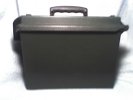|
Powered by ccBoard |
Welcome to Broadband-Hamnet™, Ham radio's broadband network without wires Ubiquiti support now available ! We win awards! See the AWARDS Page View the NEWS for the latest information What to do with Mesh? Visit APPLICATIONS Get On the Map ! SIGN UP to be a local Broadband-Hamnet™ Elmer Find us on Facebook!
